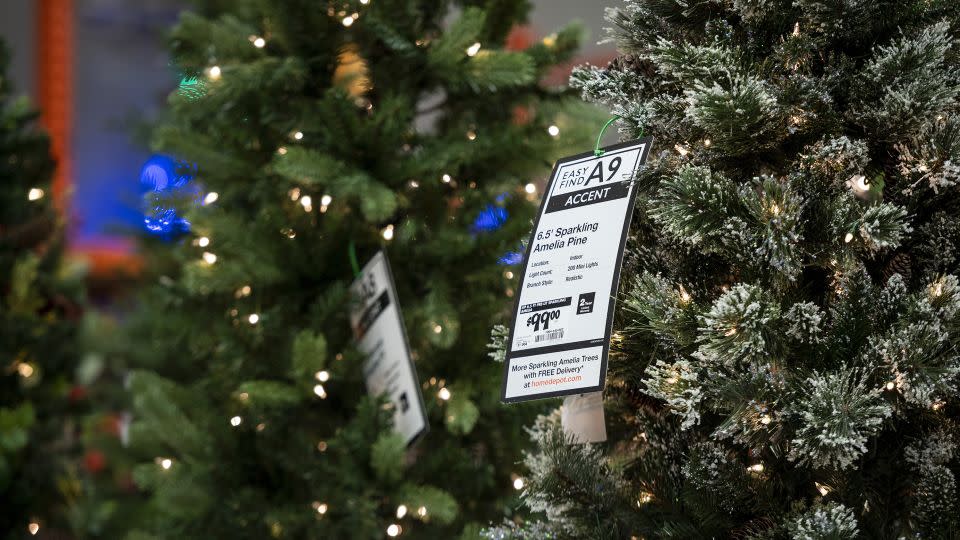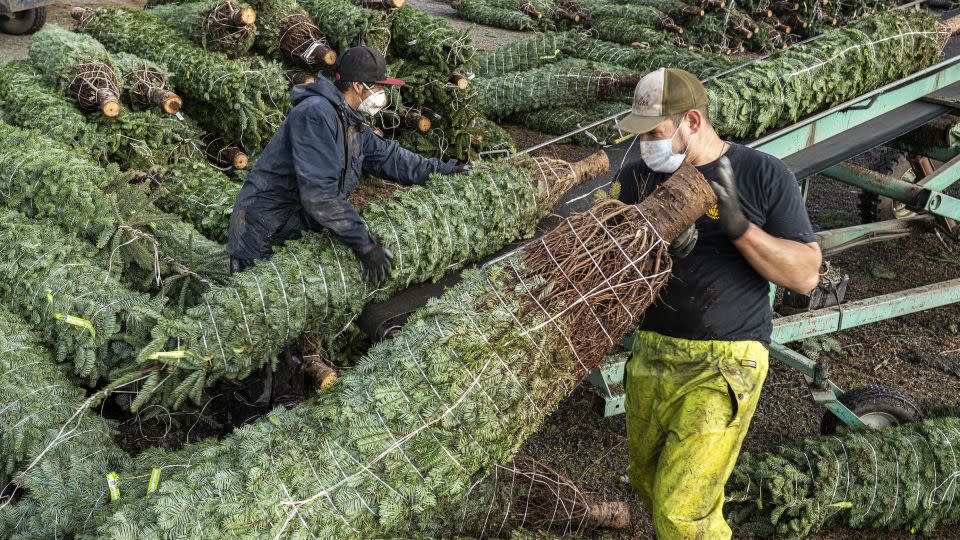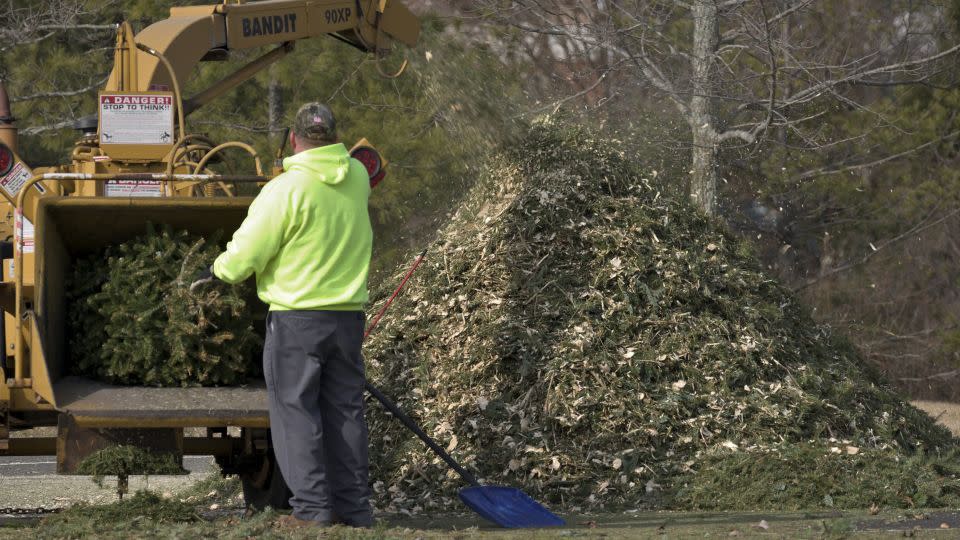It’s that time of year when people venture out in search of the best holiday deals and wrapped gifts. But what is the best type of tree to place them under?
While some delight in the scent of a real tree and the joy of picking one up from a local farm, others prefer the simplicity of artificial trees that they can reuse next Christmas.
But consumers are becoming more climate conscious, and considering which tree has the least impact on our rapidly warming planet has become a vital part of the holiday decision. Plus, choosing an earth-friendly tree will likely get you on Santa’s nice list.
So what type of tree has the lowest carbon footprint: a natural tree or a store-bought plastic tree? It’s complicated, experts say.
“It’s definitely a lot more nuanced and complex than you think,” Andy Finton, director of landscape conservation and forest ecologist at the Nature Conservancy in Massachusetts, told CNN.
We’ve made a list (and checked it twice) of the things you should know before choosing between real and artificial.
The case of artificial trees

It’s easy to imagine that reusing an artificial tree year after year is the most sustainable option. But Finton says that if an artificial tree is used for six years (the average time people tend to keep it) “the carbon cost is definitely higher” than that of a natural tree.
“If artificial trees are used for a longer life, that balance changes,” Finton told CNN. “And I’ve read that it would take 20 years for the carbon balance to be roughly equivalent.”
This is because artificial trees are usually made of polyvinyl chloride plastic or PVC. Plastic comes from petroleum and is created in petrochemical facilities that spew pollutants. Studies have also linked PVC plastic to cancer and other environmental and public health risks.
Then there is the transportation aspect. According to the US Department of Commerce, most artificial Christmas trees are imported into the US from China, meaning the products are transported on fossil fuel-powered ships across the Pacific Ocean. and are then transported on heavy cargo trucks before they finally land on distributors’ shelves. or at the consumer’s door.
The American Christmas Tree Association, a nonprofit organization that represents artificial tree manufacturers, commissioned WAP Sustainability Consulting with a study in 2018 that found the environmental impact of an artificial tree is better than that of a real tree. if the fake tree is used for at least five years.
“Artificial trees were observed [in the study] for factors like manufacturing and overseas transportation,” Jami Warner, executive director of ACTA, told CNN. “The planting, fertilization and irrigation of real trees was taken into account, which have an approximate cultivation period in the field of seven to eight years.”
What are the benefits of real trees?


On average, it takes seven years for a Christmas tree to fully grow, according to the National Christmas Tree Association. And as it grows, it absorbs carbon dioxide from the air. Protecting forests and planting trees can help avoid the worst impacts of the climate crisis by removing planet-warming gas from the atmosphere.
If trees are cut down or burned, they can release the carbon they have been storing into the atmosphere. But Doug Hundley, spokesman for the National Christmas Tree Association, which advocates for real trees, says the act of cutting down a farm’s Christmas trees is offset when farmers immediately plant more seedlings to replace them.
“When we harvest the trees or cut them down, we replant them very quickly,” Hundley said.
If the idea of walking through a forest to find the perfect tree sounds intriguing, you can purchase a permit from the U.S. Forest Service, which encourages people to cut down their own tree instead of purchasing an artificial one. According to Recreation.gov, cutting down thin trees in dense areas can improve forest health.
But Finton doesn’t recommend pulling a Clark Griswold and cutting down a huge tree to bring it home, especially if you’re in an area where it’s not allowed. Instead, he recommends getting a tree from a local farm.
“For me, the benefit of going to a Christmas tree farm, which is different than cutting down a tree in the forest, is that it concentrates the impact of tree cutting in one place,” he said. “And it puts the responsibility on farmers to regenerate those trees.”
There is also an economic benefit to going natural, as most of the trees people end up getting are grown on nearby farms. In the United States alone, about 15,000 farms grow Christmas trees and employ more than 100,000 people full or part-time in the industry, according to the National Christmas Tree Association.
“What we’re doing by purchasing a natural Christmas tree is we’re supporting local economies, local communities, local farmers, and to me, that’s a key part of the conservation equation,” Finton said. “When a tree farmer can monetize his land, he is less likely to sell it for development and convert it to other uses.”
Disposal issues


Trees pile up on sidewalks after the holidays, and the final destination in many places is landfills, where they contribute to emissions of methane, a powerful greenhouse gas about 80 times more potent than carbon dioxide.
“It is highly discouraged that real Christmas trees end up in landfills,” Hundley said, adding that there needs to be “separate areas for yard waste where Christmas trees can go.”
But some towns and cities reuse trees to benefit the climate and the environment. In New York City, trees left on sidewalks for a set period of time are collected for recycling or composting. The city’s sanitation department also hosts an initiative called MulchFest, where residents can bring their trees to be cut down and used to nourish other trees throughout the city.
“When the owner is done using the tree, it is very easy and common in the United States to turn it into mulch, and the stored carbon is put back into the soil,” Hundley added.
Finton also says old Christmas trees can be reused to restore habitat; They can help control erosion if placed along the banks of streams and rivers, and can even help underwater habitats thrive if placed in rivers and lakes.
The end of life of an artificial tree is very different. They end up in landfills, where they could take hundreds of years to decompose, or in incinerators, where they release dangerous chemicals.
The bottom line


Weighing the complicated pros and cons of climate, real Christmas trees have the advantage. But if you choose to decorate your halls artificially, get a tree that you will love and reuse for many years.
Either way, Finton said, people should feel good about their decision and find other ways to address the climate crisis.
“It’s a debate, but once you’ve made a decision, you should feel good about it, because there are many other things we can do in our lives that have an even bigger climate impact, like driving less or advocating for policies that expand energy renewable,” Finton said. “Enjoy the holidays and focus on other aspects of your life to reduce the impacts of climate change.”
A version of this story was originally published in November 2021.
For more CNN news and newsletters, create an account at CNN.com